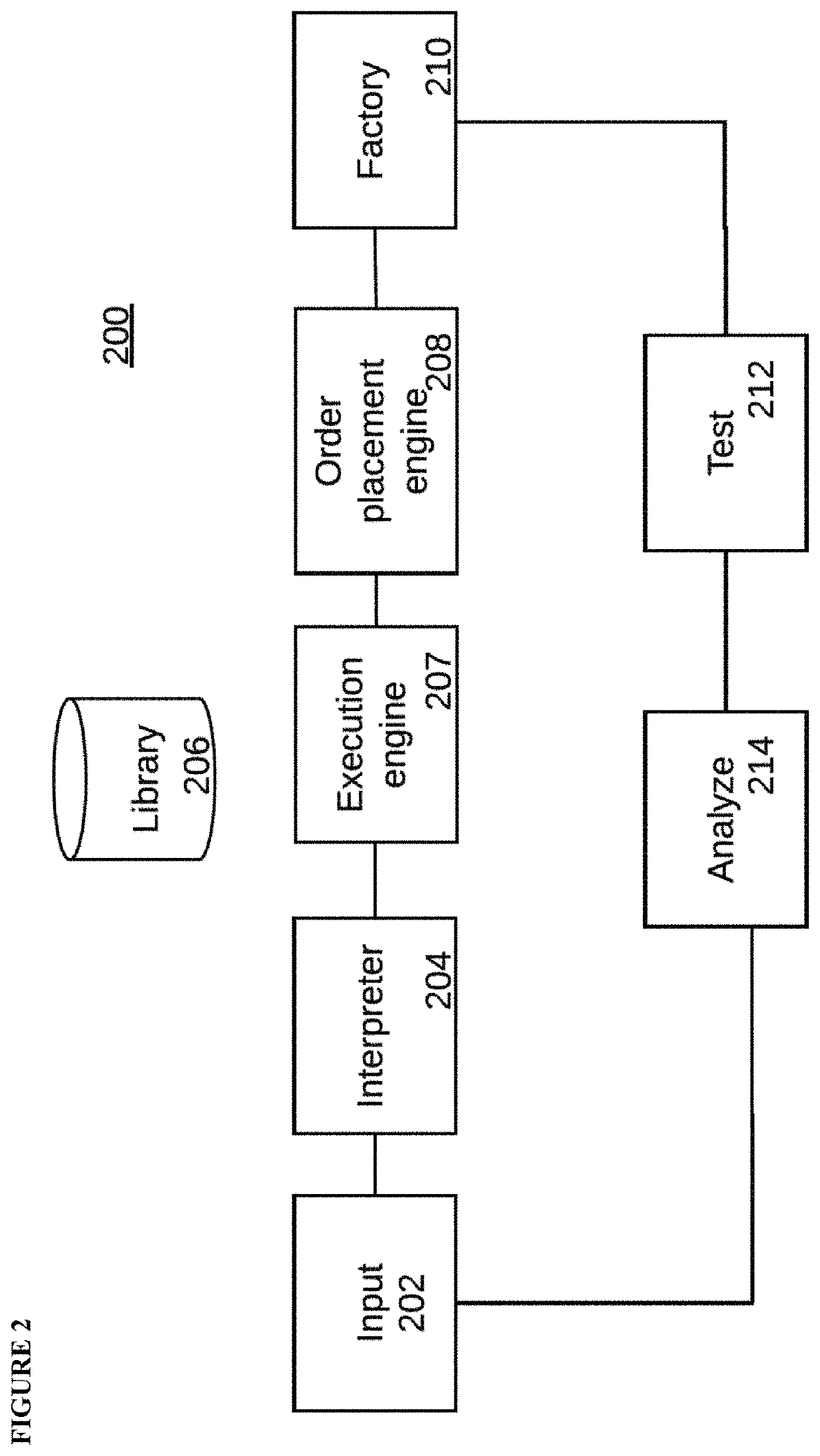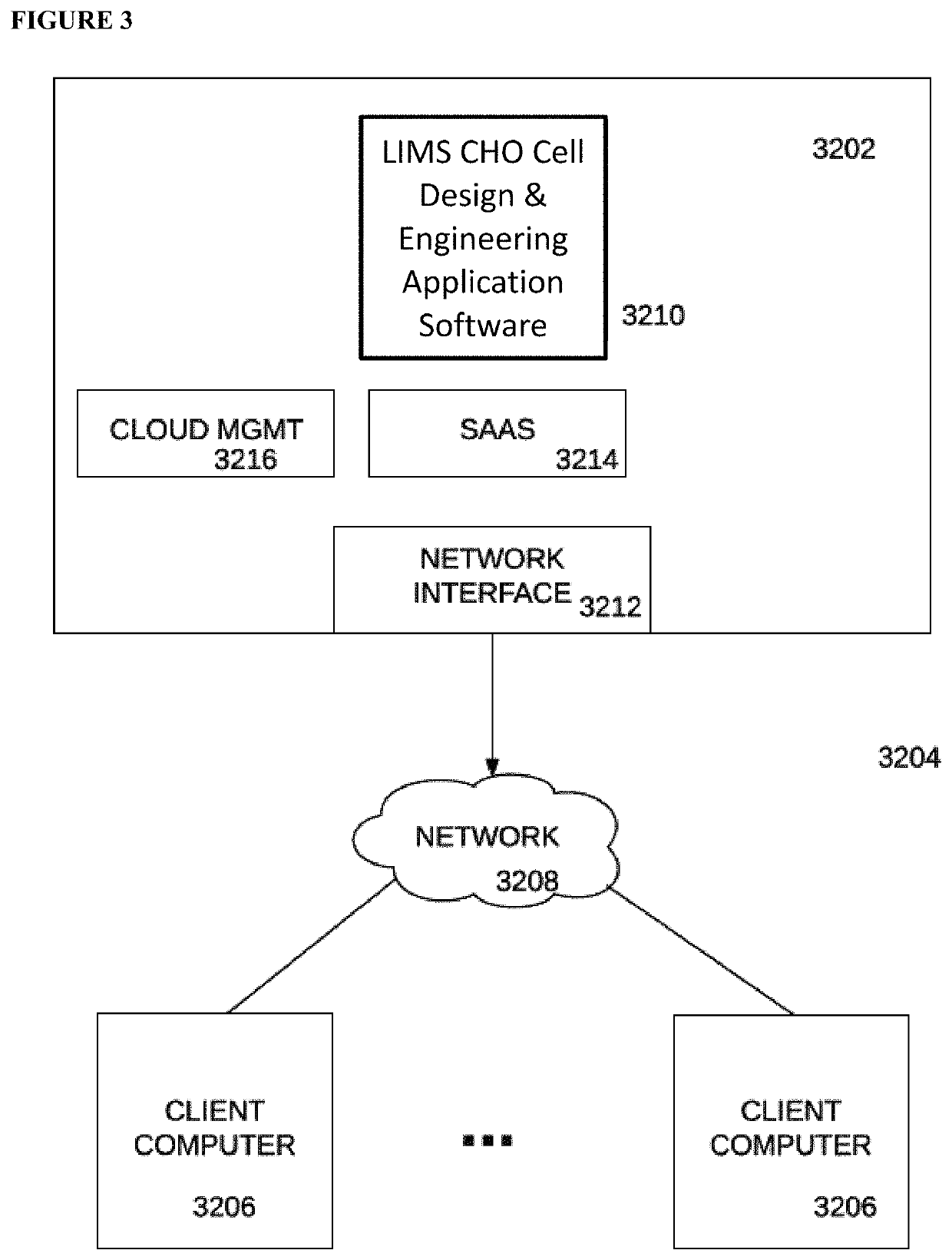HTP platform for the genetic engineering of Chinese hamster ovary cells
a technology of chinese hamster ovary and genomic engineering, which is applied in the field of high-throughput (htp) genomic engineering platform, can solve the problems of cho cell production process still suffering from cellular limitations, low productivity, and limited growth, and achieves the effect of improving the production of therapeutic proteins
- Summary
- Abstract
- Description
- Claims
- Application Information
AI Technical Summary
Benefits of technology
Problems solved by technology
Method used
Image
Examples
example 1
Workflow for Implementation of a Promoter Swap Library to Explore the Genetic Landscape of Targeted Pathway Genes
[0330]This example illustrates an embodiment of the HTP genomic engineering procedure, which utilizes the HTP promoter swap genomic engineering tool.
[0331]A. Identification of a Target for Promoter Swapping
[0332]As aforementioned, promoter swapping is a multi-step process that comprises a step of: Selecting a set of “n” genes to target.
[0333]In this example, the inventors have identified a group of eight functionalities, which are thought to be important in CHO cell therapeutic protein production. From within each of these eight broad functionalities, the inventors have then chosen a single particular gene to target with the promoter swap genomic engineering tool.
[0334]Consequently, there have been eight target genes, one from each representative functionality, chosen for the experiment. (See, FIG. 6 for target genes, and Example 2).
[0335]B. Creation of Promoter Ladder
[03...
example 2
c Implementation of a Promoter Swap Library to Explore Pathway Antibody Expression Dependence
[0349]The present study utilizes the HTP promoter swap genomic engineering tool to improve antibody expression in CHO cells. The promoter swap tool is used to clearly identify the relationship between pathway and protein expression and quality.
[0350]To evaluate the relationship between the targeted genetic function and antibody expression / secretion, multiple strains are constructed that differ in a single genetic loci from each other. The genetic change involves the replacement of the endogenous promoter driving the expression of the genes of the target pathways with a heterologous promoter(s) of varying strengths, i.e., PROSWAP. Various schematic depictions of the exemplary embodiment are found in FIGS. 6-10.
[0351]The overall genomic editing approach to effect the desired change is to target the genomic loci with Cas9 and a sgRNA to cut the genome at the desired location, and insertion at t...
example 3
tion and Multi-Factor Combinatorial Testing of a Promoter Swap Library
[0385]In this example, promoter swaps identified as having a positive effect on host performance in Example 2 are consolidated in second order combinations into new libraries.
[0386]The decision to consolidate a given promoter:gene combination is based on overall positive effect on a parameter of interest, e.g. physiological properties including mAb titer, glycosylation pattern, cell growth, viability pattern during cultivation, cell densities, and specific productivity (pg mAb / cell / day), and the likelihood that the combination would produce an additive, synergistic, or non-deleterious effect.
[0387]
TABLE 7Listing of Sequences in Sequence FileSEQ ID NODescription1CMV promoter2EF1α promoter3SV40 promoter4RSV promoter5PGK promoter6XP_003503464.1 SRP14 target gene encodedprotein7NP_001230978.1 XBP-1 target gene encodedprotein8XP_007622335.1 COSMC (C1GALT1) target geneencoded protein9XP_007640773.1 BCL2 target gene enco...
PUM
| Property | Measurement | Unit |
|---|---|---|
| temperature | aaaaa | aaaaa |
| densities | aaaaa | aaaaa |
| stress resistance | aaaaa | aaaaa |
Abstract
Description
Claims
Application Information
 Login to View More
Login to View More - R&D
- Intellectual Property
- Life Sciences
- Materials
- Tech Scout
- Unparalleled Data Quality
- Higher Quality Content
- 60% Fewer Hallucinations
Browse by: Latest US Patents, China's latest patents, Technical Efficacy Thesaurus, Application Domain, Technology Topic, Popular Technical Reports.
© 2025 PatSnap. All rights reserved.Legal|Privacy policy|Modern Slavery Act Transparency Statement|Sitemap|About US| Contact US: help@patsnap.com



